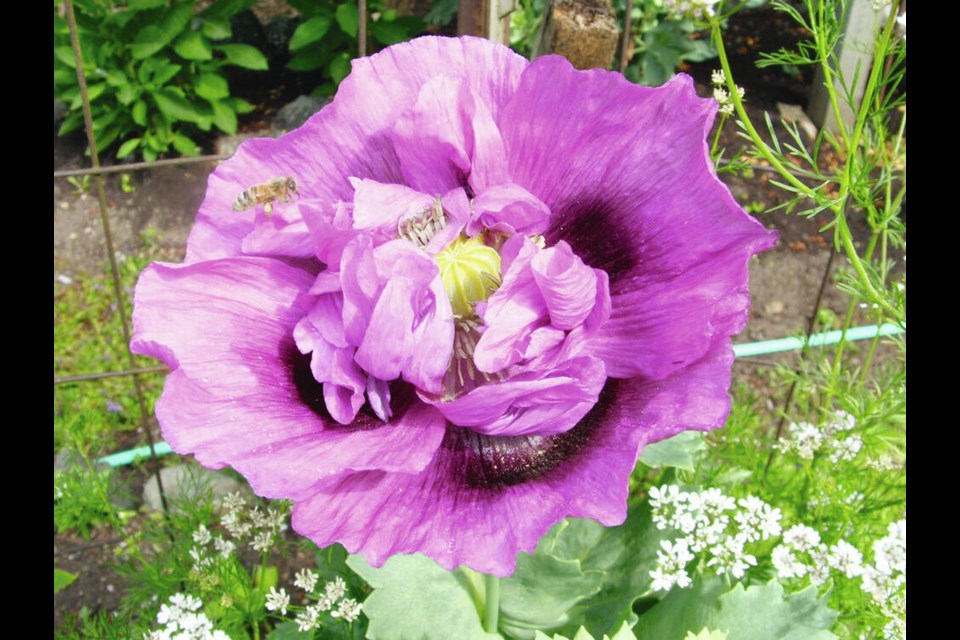Although the seasonal weather change is already underway, tomorrow’s official start to spring will perhaps make us more conscious of the brighter light and lengthening days. The increase in daylight hours is a boon for gardeners keen to attend to our plots and launch the main planting season.
As I checked my various calendars to verify the date this year of the first spring day, I noticed on one of the calendars that March 20 was also designated “International Day of Happiness.”
I’d never heard of such a designation for a day, but I’ve learned that the United Nations, in 2012, proclaimed March 20 to be the International Day of Happiness. The intention was to recognize happiness and well-being as universal human aspirations.
The notion of happiness at this point in 2022 may seem slightly absurd in light of the world’s considerable woes, war now among them. Perhaps that’s the reason the theme of Happiness Day 2022 is focussed on three main attitudes affecting happiness: Keep cool and calm. Stay wise. Be kind.
These guidelines will be familiar to those of us who have listened to similar advice over the past two pandemic years. They do present a path to peace amid surrounding storm clouds.
Garden bliss. Only gardeners could possibly understand this, but what sets my heart singing with happiness these days is the almost completely emptied garden bed in my direct view through a window above the kitchen sink.
I spend untold hours at that sink, preparing garden vegetables and fruits for storing and use. Then there is the enormous amount of indoor seeding I do beside the sink.
Thanks to major pruning done, with help, over the past two years to thin out the rhododendrons and other shrubs in a broad area close to the window, and to remove much of the lower growth on those shrubs, I now have a clear view through that area to the plot that I’ve just managed to dig over. To me, that almost-empty plot is a source of gleeful happiness.
I had help in the project. It took two of us three hours to dig up roots, remove weeds, and thin out some self-sown foxglove and snapdragon plants. A few rhubarb plants have just begun to emerge at one end of the long rectangle, and at the other end a pink-flowering Clematis armandii on wire fencing is loaded with fat, ruby flowerbud clusters. The evergreen leaves came through the winter relatively well, with some showing a bit of frost damage.
Apart from those plants, the plot is a beautiful expanse of dark, freshly dug, soil. Pure potential. My ambitions for that plot, however, are quite simple. To reduce the work involved in caring for a large, rambling garden, I’ll be turning the plot into a bed of flowers, mainly ones I know will self-seed to return each year.
A broad patch of self-sown larkspur has already emerged beside the strawberries. It will be easy to shovel up sections of them for transferring to the empty plot. This month I’ll seed annual poppies and calendula in the plot. Next month, I’ll add cosmos, painted daisy and sunflowers.
I’m imagining that long bed full of summer flowers as I anticipate the pleasure of viewing it from my kitchen window. The assortment of flowers should also be a happily busy place for pollinators and other beneficial insects.
Feed the soil. A key gardening concept, one I believe in and follow, is “Feed the soil, not the plant.” For strong, productive growth in whatever I’m about to plant, I spend considerable time nourishing the soil first.
My intent is to enrich the soil with natural elements that will feed and activate the teeming mass of soil microorganisms that create nutrients for plants. Essential is a generous layer, at least five cm deep, of compost. This addition of organic matter plumps a soil’s texture, enhances its ability to retain moisture, and helps to keep it well aerated.
Again, to best nurture soil life, I choose to use natural-source, slow-release fertilizers like blends of seed meals, rock phosphate, lime and kelp meal. These can be purchased, or mixed at home. Because these elements release nutrients over several months, I’ve never found the need for follow-up fertilizing.



